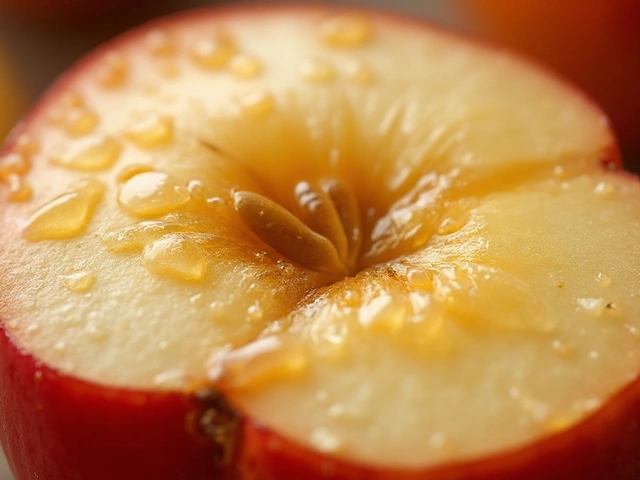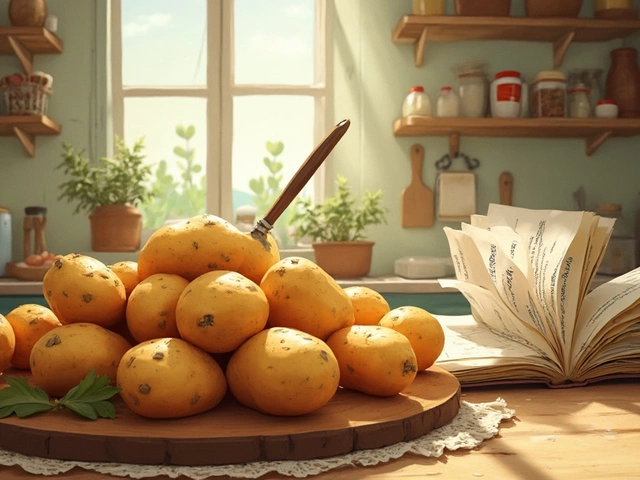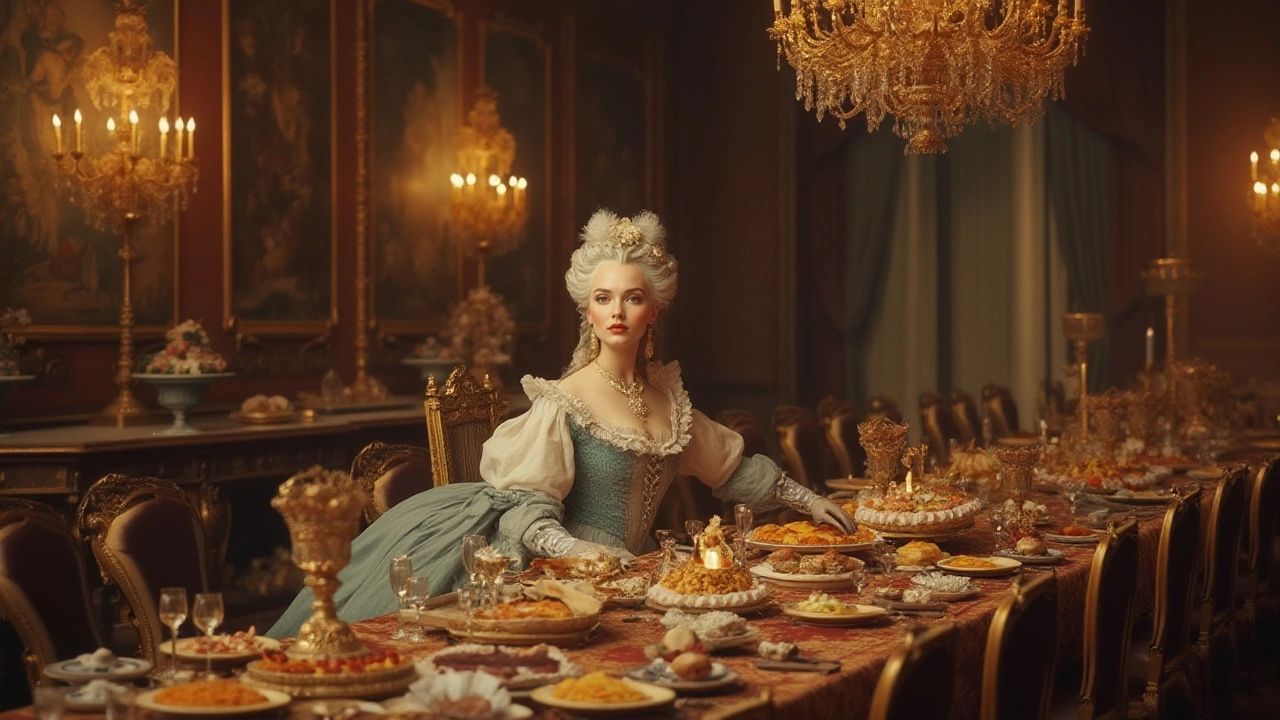
For centuries, the phrase 'Let them eat cake' has been attributed to Marie Antoinette, the last Queen of France before the French Revolution. It's a saying that evokes images of royal extravagance and a shocking disconnect from the realities of the starving masses. But did she really say it, and what is the truth behind this infamous quote?
Diving into the annals of history, we uncover the origins of this statement, a time when France was on the brink of a monumental upheaval. The era was marked by opulence and indulgence among the elite, with cakes and pastries playing a significant role in their culinary culture.
In this article, we'll not only explore the truth behind the phrase but also delve into some exquisite cake recipes inspired by the delicacies of the 18th-century French court. These sweet treats, while rich in history, are surprisingly accessible to modern bakers, offering a taste of the past right in your kitchen.
- The Myth of 'Let Them Eat Cake'
- Understanding the Historical Context
- Exploring 18th-Century French Desserts
- French Cake Recipes Inspired by the Era
- Misquoted or Misunderstood?
The Myth of 'Let Them Eat Cake'
The phrase 'Let them eat cake' has become symbolic of the utter disconnect between the ruling elite and the poorer classes, often associated with Marie Antoinette. Though widely believed, historians argue that the truth may lie elsewhere. In fact, there's scant evidence that the Queen of France uttered these infamous words. The quote first appeared in Jean-Jacques Rousseau's Confessions, which was written when Marie Antoinette was just a child, decades before she ascended to the throne. This discrepancy casts doubt on the authenticity of the claim that it was she who callously suggested the destitute eat pastry when deprived of bread.
Many historians suggest that this anecdotal line was designed to paint Marie Antoinette as an out-of-touch figurehead, a narrative that served political pressures well during the upheavals of the French Revolution. France's nobility, once drenched in extraordinary wealth, found themselves under scrutiny from the Third Estate, seeking to challenge the unequal distribution of power. Marie Antoinette became a central figure in this societal transformation, emblematic of lavish excess in times of acute struggle. While newspapers and pamphlets of the era aimed their barbs at her, perpetuating the narrative she was the callous architect of France's misfortunes, modern historians often reject these attributions as exaggeration.
As tempting as it may be to view history in black-and-white simplicities—where villains and heroes are neatly framed—reality offers a multitude of grays. It's crucial to acknowledge how stories evolve over time and take root in public consciousness. The 'let them eat cake' myth undoubtedly captures attention with its indicting simplicity, but a deeper examination unveils a landscape of nuanced complexities. Marie Antoinette, imprisoned by both her lavish life and public perception, became a scapegoat for systemic failures that stretched far beyond her control.
"The story was too good to resist, a testament to how a clever turn of phrase can electrify public sentiment, regardless of its truth," writes historian Antonia Fraser in her biography on Marie Antoinette.
When examining historical accounts, it's worthwhile to remember that the victors write history. What has endured as 'fact' may actually be fiction used for dramatic effect to spur revolution. Propaganda has always played a potent role in shaping narratives to galvanize masses. The cake quote serves as a reminder of how the words placed in leaders' mouths, genuinely or otherwise, can pivot public opinions and alter destinies, echoing in advice to question sources.
In looking through the layers of historical lore, 'Let them eat cake' transforms into much more than a simple anecdote. Though Marie Antoinette may never have ushered this infamous phrase, the story created did its job, forever cementing an image of careless extravagance. The effective use of such rhetoric underscores how powerful language, wielded effectively, navigates through eras, contributing to our understanding—or misunderstanding—of figures long passed.
Understanding the Historical Context
The backdrop of the infamous 'Let them eat cake' remark takes us back to the tumultuous times of pre-revolutionary France. This period was characterized by a severe economic crisis exacerbated by years of poor harvests, leading to widespread famine among the French populace. Marie Antoinette, the young and extravagant Austrian archduchess, who became the Queen of France by marrying Louis XVI, was often viewed as a symbol of the monarchy's disconnect from the common people.
During this time, France's economy was struggling under the weight of debt incurred from involvement in the American Revolution and opulent spending by the royal court. The glittering world within the Palace of Versailles seemed worlds apart from the grim reality faced by the peasants in the countryside, who could barely afford bread. The stark contrast between their lavish parties and the empty tables of the masses laid the groundwork for growing resentment against the monarchy.
The phrase itself first appeared not during Marie Antoinette's time but in Jean-Jacques Rousseau's autobiography, Confessions, written in 1765, when she was still a child. In it, a great princess, often misattributed to being Antoinette, allegedly ignored the famine of the public with callous indifference. Historians generally agree that the queen did not utter these words, as Marie Antoinette was known to be involved in charitable activities contrary to the popular image portrayed by her detractors.
According to Antonia Fraser, a noted historian and biographer of Marie Antoinette, "It was a great piece of those who wished to damage the reputation of Antoinette and the monarchy, but there’s no direct evidence tying her to those words."
The real historical context paints a picture of political manipulation and the power of rumor in swaying public opinion. These events occurred during the buildup towards the French Revolution, a time when dissatisfaction snowballed into fervent calls for change, leading to one of the most significant social upheavals in history. Such stories highlight how narratives can shape or distort our understanding of the past, often more colorful and scandalous than the truth itself.
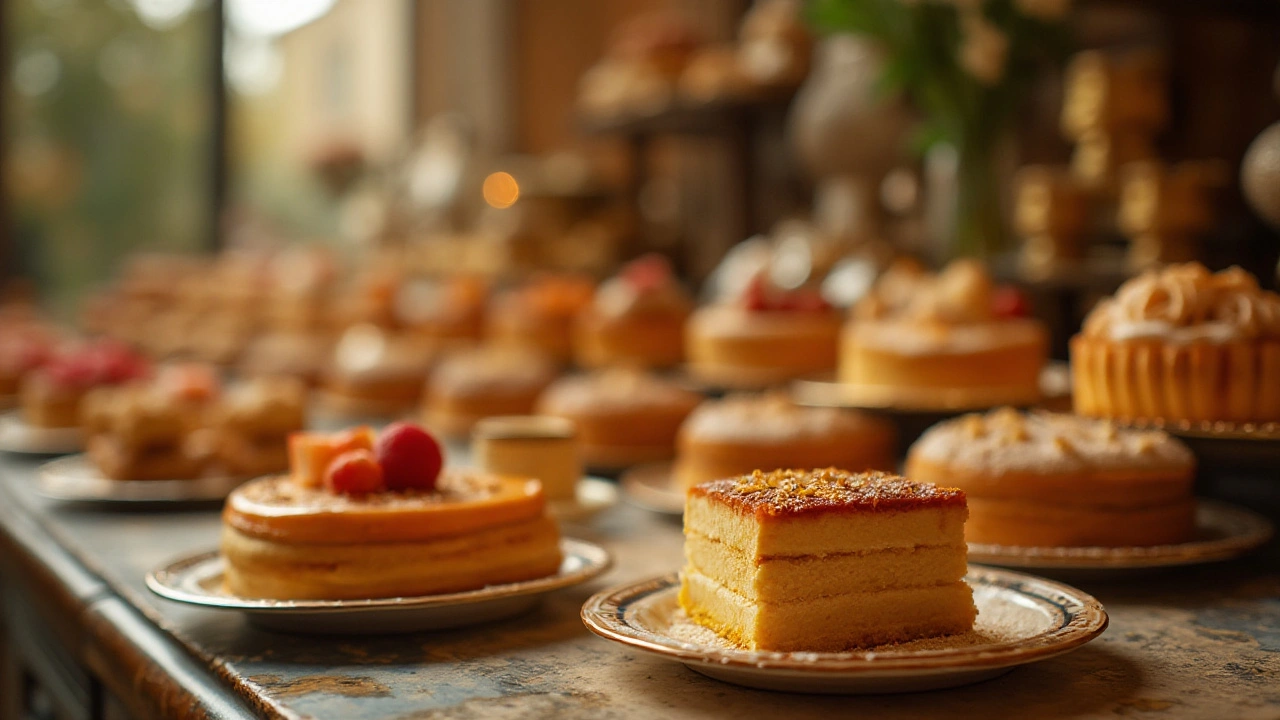
Exploring 18th-Century French Desserts
The 18th century was a revolutionary time for French cuisine, especially in the world of desserts. During this period, the art of patisserie truly blossomed. French chefs in royal courts were experimenting with flavors, textures, and presentation, turning every sweet course into a piece of artistry. There was lavish attention given to detail, from the intricate designs of the pastries to the symphony of flavors within. Imagine being presented with a dessert as a visual masterpiece, almost too beautiful to eat. This era produced desserts that were not just about taste, but a feast for the senses, a dynamic performance happening right on your palate.
Cake, or "gâteau," as the French would say, was a celebration all about indulgence. Cakes during this time ranged from dense almond-flavored treats to light, airy confections. The Marquise de Sévigné, a prominent chronicler of court life, often described desserts as 'very nearly the whole banquet.'
Culinary historian Francisca Prieto once remarked, 'Sugar and sweets were the pride of any fashionable table, reflecting wealth and sophistication.'This highlights how desserts were interwoven with notions of luxury and status. It wasn't just about sweetness, it was an elaborate showcase of skill and opulence.
Among the various 18th-century delights, we find beloved treats such as the mille-feuille, which translates to "a thousand leaves," a perfectly apt name for this pastry composed of layers upon layers of crunchy puff pastry and creamy fillings. Another popular dessert of the time was the almond cake, or "pain de Gênes," characterized by its moist texture and rich flavor, channeling the taste of marzipan in every bite. Some royals developed a taste for chocolate, and thus chocolate tortes and mousse found their way to the banquet tables, which was a relatively new addition in France at the time due to the burgeoning import of cocoa from abroad.
These desserts not only satisfied the French appetite for something sweet but demonstrated technical prowess. They required precision and a deep understanding of ingredients, aspects that were being honed to perfection in the royal kitchens of places like Versailles. The patisserie techniques developed throughout this period were pivotal, laying the groundwork for French desserts as we know them today. If you get a chance to visit a patisserie in France, witness how those age-old traditions still inspire the delicate confections behind the glass. Whether reimagined for modern tastes or kept true to tradition, these sweets continue to tell stories of a rich, decadent past.
While many of these recipes have been adapted and simplified for today's kitchens, their heritage remains intact. Trying your hand at making these historical pastries at home can give you a sneak peek into the elegance of the past. Many people find that the juxtaposition of stiffly whipped cream and flaky pastry is still a pure delight to indulge. It is fascinating how time can pass, and yet, the essentials of taste and enjoyment remain a constant, linking the present to a flavorful past.
French Cake Recipes Inspired by the Era
Exploring the rich culinary landscape of 18th-century France, one discovers an array of decadent desserts that were once the highlight of royal banquets. The French court was renowned for its culinary creativity, with chefs constantly innovating to impress the aristocracy. This era gave birth to a range of delightful cakes that remain loved worldwide. However, the cakes of that time were nothing like the modern-day confections we rave about. Instead, their complex flavors and unique textures came from using ingredients like ground almonds, rose water, and dried fruits—ingredients that were luxurious back then. Despite their rich history, these cakes can be made easily even in our contemporary kitchens.
A favorite of the time was the 'Gâteau de Savoie', a sponge cake that originated from the Savoy region. Light and airy, it was developed for the Count of Savoy as early as the 14th century but gained popularity in the 1700s. The clever use of egg whites whipped to a frothy consistency replaced modern leavening agents, giving the cake its ethereal texture. This cake is a testament to the ingenuity and resourcefulness of French chefs, who mastered the art of creating delight with limited technology.
Another exquisite treat was the 'Charlotte Russe', a molded dessert made with layers of cream and cake. While this dessert became widespread in a later era, its roots trace back to the creativity of French chefs aiming to blend textures and flavors. It was often flavored with almonds, creating a perfectly sweet and nutty experience that delighted those lucky enough to enjoy it. Not just a treat for the palate, it was also a feast for the eyes, intricately decorated with ornate designs.
These historic recipes are not just culinary relics; they offer us a glimpse into the world of people who lived centuries ago. Baking them today allows us to taste history and appreciate the fragrant sweetness that was once exclusive to the royal elite. Marie Antoinette herself might have indulged in these cakes during her extravagant gatherings at Versailles, engulfed in melodious music and laughter. While it’s unlikely she suggested feeding the masses such delicacies, the notion invites us into a fantastical exploration of tastes and textures.
To recreate these pastries in your kitchen, start with the basics of French baking techniques. Whip egg whites to form stiff peaks for a light consistency. Choose fine almond meal instead of coarse for a delicate crumb. Don't shy away from bold flavors; vanilla, almond, and citrus zest can enhance the cake's richness. With patience and care, these recipes can transform simple gatherings into elegant affairs reminiscent of the opulent dinners of the French court.
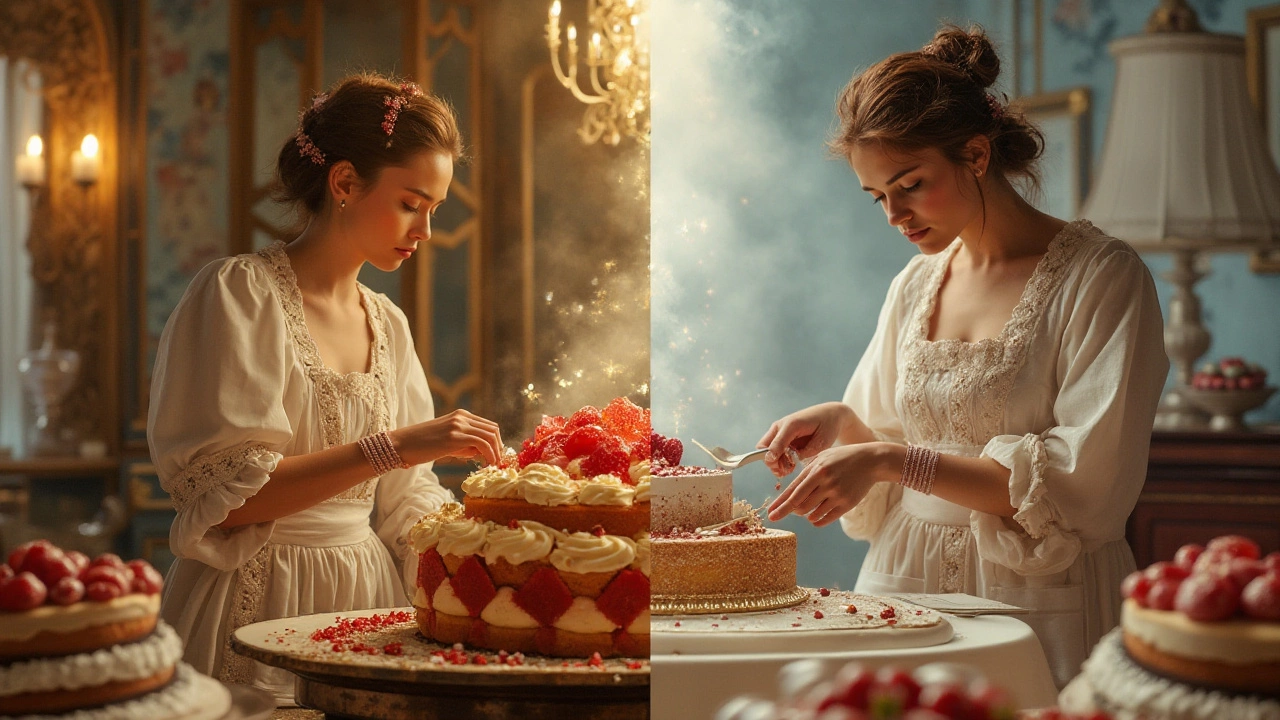
Misquoted or Misunderstood?
The phrase, 'Let them eat cake', has long been associated with Marie Antoinette, yet historians agree that there is no evidence she actually uttered these words. In fact, the expression predates her by several years, appearing in Jean-Jacques Rousseau's 'Confessions', written in the mid-18th century. Rousseau recounts a story about a 'great princess' who suggested the starving peasants eat cake when deprived of bread. Given the timeline, it’s unlikely this princess could have been Marie Antoinette as she was a child at that time.
Rousseau's anecdote was possibly a fabrication or a critique on the disconnect between the nobility and common people. During this tumultuous period in France, many sought a symbolic figure to blame, and Marie Antoinette, being a foreign queen, became that scapegoat. The French Revolution amplified the need for such symbols, and a catchy, yet spurious, quote served the revolutionaries’ purpose in galvanizing public opinion against the monarchy.
"Even if Marie Antoinette didn’t say it, the phrase encapsulates perceived arrogance and ignorance attributed to the elite," observes historian Antonia Fraser.This misconception has, over the centuries, evolved into a tale of royal aloofness and detachment from the struggles of common people. People needed someone to blame, a face to attach their grievances to, and unfortunately for Marie Antoinette, the shoe fit all too well. The gulf between royalty and everyday citizens added fuel to the revolutionary fire, with or without actual quotes.
Her reputation for indulgence and extravagance inaccurately painted her as the epitome of elite ignorance, largely overshadowing the nuances of her true personality and actions. Despite being perceived as indifferent, she made several attempts at charity and support for those suffering during the economic crisis, though these efforts were often overshadowed by her lavish image. Marie Antoinette was more maligned than malicious, trapped within the complex tapestry of a revolution in dire need of palpable villains.
Interestingly, the popularity of the phrase 'Let them eat cake' has endured, transcending its dubious origin. It serves as a cautionary tale for those in power, reminding them about staying in touch with the needs and realities of their people. Today, while many realize that it’s an apocryphal story, it still stands as a testament to the turbulent dynamics between rulers and the ruled during the French Revolution.
Myth-Busting Through History
When historians delve deeper into accounts from that era, they discover striking inconsistencies with the supposed tale of Marie Antoinette’s haughtiness in the face of hunger. Marie, only a teenager when she ascended to the French throne, had to navigate not only a foreign court but also the expectations of being a queen during upheaval. Many notions that painted her as unkind emerged from her being an outsider and a convenient target for public dissatisfaction.
- The absence of concrete proof of her using the phrase emphasizes the narrative’s role as propaganda.
- Ironically, Marie Antoinette is often used today to illustrate the danger of being out of touch with the masses.
- Her fate, and the myths surrounding her, underscore challenges and excesses inherent in absolute power.
Thus, as captivating as the story may be, we find that real history, with all its complexities and truths, surpasses fiction in shaping our understanding of the past. The essence of 'Let them eat cake' transcends a mere allocation of words to a person, serving as a metaphorical lens through which we view the intersection of opulence, indifference, and entitlement. It's a saying that, whether misquoted or misunderstood, offers us a peak into the perennial power struggles etched in the historical annals of the French Revolution.




